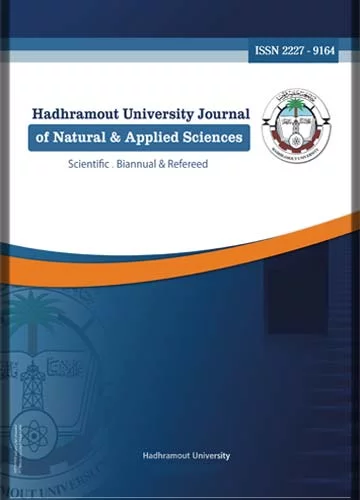Evaluation of Sana’a Wastewater Treatment plant
Problem Analysis and Suggested Results
Keywords:
Wastewater treatment, Sana'a, activated sludge, Cadre, Occupational health and safety, trainingAbstract
ana’a wastewater treatment plant (SWWTP) is designed as activated sludge -extended aeration system.
The SWWTP has many problems since commissioned in 2000, in terms of technical, design, operational,
administrative and financial. This paper aims at studying and analyzing the problems of the Sana’a
Wastewater treatment Plant (SWWTP)from the technical, financial, administrative and legal aspects and
to develop proposals for solutions in the short and long term. This research was conducted based on the
complementary efforts carried out by the authors as field and desk study through working side by side
with the expatriates and consulting companies during the last fifteen years since the SWWTP
commissioned, in order to support the SWSLC in the operation, maintenance and upgrading of the staff in
O&M of the SWWTP due to its complexity as electromechanical technology that needs multidisciplinary
specializations. This research was conducted through operation of the SWWTP and water quality
monitoring of influent and effluent of its operating equipment, from which the problems were identified
and accordingly the possible solutions were suggested to mitigate these problems, including analyzing the
number and level of the available staff and conclude gap in required staff. This study concluded the main
problems causing the failure of the SWWTP as follows: Unsuccessful selection of the treatment
technology which did not consider the lack in financial and human resources capacity in Yemen,
including labor and spare parts; The operational problems experienced by the SWWTP, as increasing
operational organic concentrations (BODin = 1160mg /L, BODout =291g/L), compared to the design
values (BODin = 500mg /L) (BODout = 30mg /L), which resulted in reaching over the capacity, that
resulted in low efficiency (65-70%). This also resulted into deteriorating the effluent and sludge quality
and therefore, not possible to sell treated water and sludge to the farmers, which would cover part of the
financial budget for O&M of the SWWTP; misuse of the sewerage network by the users through dumping
of solid waste, which contributed to the breakdown of the various mechanical units; continue to connect
new areas to the network; the difficulty to acquire the land for the implementation of the planned new
WWTP, considering the current SWWTP is overloaded; Not applying the organizational structure
suggested by the consultant, which resulted in overlap of tasks, which negatively affected the operation
of the WWTP; Lack of encouraging and attracting qualified staff and motivating them to stay in the
SWWTP by means of providing them with enough salaries and safety tools ; Stop completing the
implementation of upgrading units, due to the political unrest in Yemen since 2011 .




